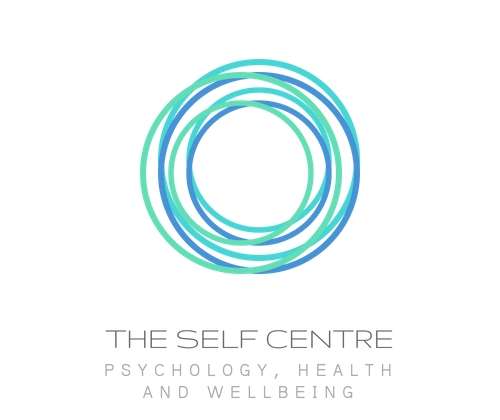
Navigating Peri-Menopause/Menopause, and Burnout: Understanding the Overlap and Differences
by Lyndsay Babcock
Principal Clinical Psychologist and Practice Director
For many women in their 40s to 60s, physical and emotional symptoms like fatigue, mood swings, trouble sleeping, and mental fog can stem from either peri-menopause/menopause or burnout. Research reveals that menopause-related hormonal fluctuations can significantly impact mood, cognition, and energy levels, while burnout is driven by prolonged stress affecting mental and physical health. Understanding the distinction between these conditions helps women take effective action and find the right support.
Recognising Overlapping Symptoms
According to a 2022 review in Menopause, both menopause and burnout often present with similar symptoms, including fatigue, sleep disturbances, and mental fog, but have different root causes. Menopause symptoms stem from hormonal shifts, while burnout is largely linked to environmental stressors like work or caregiving duties.
Burn-Out
Burnout is a psychological syndrome emerging as a prolonged response to chronic workplace stress that hasn’t been successfully managed. Clinically, it is characterized by three main components: emotional exhaustion, depersonalization (a sense of detachment from work or people served), and reduced personal accomplishment or effectiveness.
Peri Menopause
Peri-menopause is the transitional phase leading up to menopause, marked by fluctuating hormone levels—especially estrogen and progesterone—that can cause symptoms like irregular periods, hot flashes, mood swings, and sleep disturbances.
Menopause
Menopause is clinically defined as the permanent cessation of menstruation, occurring 12 months after a woman’s last period, usually between ages 45 and 55, due to a natural decline in ovarian function and hormone production.
- Fatigue and Insomnia: Menopause often disrupts sleep due to night sweats and hot flashes. Burnout causes persistent insomnia from ongoing stress.
- Mood Changes: Both can cause mood swings, but menopausal mood shifts are due to estrogen decline, while burnout brings feelings of frustration and emotional exhaustion.
- Cognitive Changes: “Brain fog” appears in both but has different triggers: menopause from hormonal fluctuations, burnout from chronic stress.
How to Distinguish Between Menopause Symptoms and Burnout
To distinguish between these, consider timing, physical markers, and emotional patterns:
- Timing and Physical Symptoms: Menopause symptoms like hot flashes and irregular periods are linked to hormonal shifts and appear in cycles, often independent of stress. Burnout builds gradually with persistent external stress and lacks these markers.
- Emotional Patterns: Menopause’s mood swings, irritability, and anxiety can feel sudden, whereas burnout typically causes emotional detachment and fatigue tied directly to stress sources, like work.
- Cognitive Changes: Menopausal brain fog can seem random, whereas burnout affects memory and focus predictably during stressful periods.
If symptoms worsen regardless of workload or improve with rest, these are clues. Consulting a healthcare provider for hormone level testing or a stress assessment can help confirm the root cause and guide effective support.
Mental Health Impact and When to Seek Support
Both menopause and burnout can impact mental health, potentially increasing the risk of depression and anxiety. Understanding the underlying cause can help women seek targeted support.
- Increased Anxiety and Depression: Hormone fluctuations during menopause increase susceptibility to anxiety and depression. Research in JAMA Psychiatry (2022) found the risk for new-onset depression is 40% higher in peri-menopause, while burnout can lead to clinical depression.
- Self-Esteem and Self-Concept: Menopause disrupts self-perception, while burnout affects self-esteem regarding productivity.
Steps to Seeking Support
If you’re experiencing symptoms that are impacting your daily living, talking to a healthcare professional can be a valuable first step toward finding relief. Here are some ways to get started:
- Track Your Symptoms: Keeping a record of changes in mood, sleep, and energy over time can help you and your healthcare provider see patterns. Note whether symptoms appear randomly, follow a cycle, or seem connected to certain stressors, as this can help distinguish between menopause and burnout.
- Seek a Professional Assessment: A general practitioner can conduct hormone level tests to identify if symptoms are related to peri-menopause or menopause. Wellfemme is a telehealth menopause clinic offering online menopause consultations with GP’s to women across Australia. https://wellfemme.com.au/
- Consider Psychological Support: Working with a mental health professional can provide effective tools for managing stress, burnout, and mood changes. Treatments like cognitive-behavioural therapy (CBT), mindfulness practices, and lifestyle adjustments can help manage both burnout and menopausal symptoms, empowering you to regain balance and well-being.
At The Self Centre, Clinical Psychologist & Practice Director Lyndsay Babcock works exclusively with professional women experiencing stress, burn out and anxiety
Together, we will work to identify the underlying factors contributing to your burnout and create actionable steps to help you regain control, purpose, and balance.
Not sure if therapy is the right next step? Schedule a free 15-minute intake session with Lyndsay Babcock to see how we can work together.
Booking is easy:
- Visit our website at www.selfcentre.com.au.
- Click on the ‘Book a Free Intake Session’ button.
- Choose a time that suits you best.
Or, if you’re not ready for therapy, explore our Learning Hub, filled with bite-sized strategies to help you start making changes today.
You don’t have to navigate this alone. Support is just a click away.
